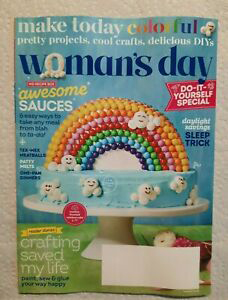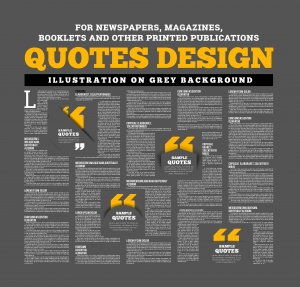
While I spend very little time crafting candles or crocheting cushions, I absolutely loved Taryn Mohrman’s article “Let’s Get Crafty” in the March issue of Woman’s Day, presented in honor of National Crafting Month (who knew?).
Taryn’s introductory piece had three parts:
My crafting roots – When she was little, her dad encouraged her to re-imagine and re-create., encouraging her love of design.
Favorite material – spray paint.
Clever hack – She uses shellac primer and sealer before spray painting, so that her projects last much longer.
As head of a team of blog content writers at Say It For You, I realized that Taryn Mohrman had used several of the blogging “hacks” we teach content writers:
First person business blog writing – it shows the people behind the posts, revealing the personality of the business owner, practitioner, or the team standing ready to serve customers.
Sharing personal background – People tend to buy when can they relate emotionally to the person bringing them the message.
Stating an opinion (favorite material) – Whether you’re blogging to promote a business, a professional practice, or a nonprofit organization, you should share your opinion or slant.
Offering a specific practical tip or trick to help readers do what they want to do, but faster, better, and more easily. Mohrman includes a simple recipe for a scrub – sugar coconut oil, and gel food coloring..
Other articles included in this Woman’s Day issue illustrate other blog post approaches and “clever hacks”:
Toni Lipse answers the question “What’s the difference?” (between crocheting and. Knitting). In creating content for marketing blogs, we need to keep in mind that people are online searching for answers to questions they have and for solutions for dilemmas they’re facing. But searchers haven’t always formulated their questions, and so what I suggest is that we do that for them in our content. .
A testimonial by Nancy Landrum explains how crafting helped her battle depression after being widowed twice and losing her eldest son. Customer testimonials in blogs are a powerful form of social proof; readers are more likely to follow the actions others have already taken.
Whether you’re getting crafty with spray paint or with words, make sure to share some clever hacks – and, even more important – a glimpse into your own roots, favorites, and opinions!
While I spend very little time crafting candles or crocheting cushions, I absolutely loved Taryn Mohrman’s article “Let’s Get Crafty” in the March issue of Woman’s Day, presented in honor of National Crafting Month (who knew?).
Taryn’s introductory piece had three parts:
- My crafting roots – When she was little, her dad encouraged her to re-imagine and re-create., encouraging her love of design.
- Favorite material – spray paint.
- Clever hack – She uses shellac primer and sealer before spray painting, so that her projects last much longer.
As head of a team of blog content writers at Say It For You, I realized that Taryn Mohrman had used several of the blogging “hacks” we teach content writers:
- First person business blog writing – it shows the people behind the posts, revealing the personality of the business owner, practitioner, or the team standing ready to serve customers.
- Sharing personal background – People tend to buy when can they relate emotionally to the person bringing them the message.
- Stating an opinion (your favorite “material”) – Whether you’re blogging to promote a business, a professional practice, or a nonprofit organization, you should share your opinion or slant.
- Offering a specific practical tip or trick to help readers do what they want to do, but faster, better, and more easily. Mohrman includes a simple recipe for a scrub – sugar coconut oil, and gel food coloring..
Other articles included in this Woman’s Day issue illustrate other blog post approaches and “clever hacks”:
- Toni Lipse answers the question “What’s the difference?” (between crocheting and. Knitting). In creating content for marketing blogs, we need to keep in mind that people are online searching for answers to questions they have and for solutions for dilemmas they’re facing. But searchers haven’t always formulated their questions, and so what I suggest is that we do that for them in our content.
- A testimonial by Nancy Landrum explains how crafting helped her battle depression after being widowed twice and losing her eldest son. Customer testimonials in blogs are a powerful form of social proof; readers are more likely to follow the actions others have already taken.
Whether you’re getting crafty with spray paint or with words, make sure to share some clever hacks – and, even more important – a glimpse into your own roots, favorites, and opinions!











Follow us online!